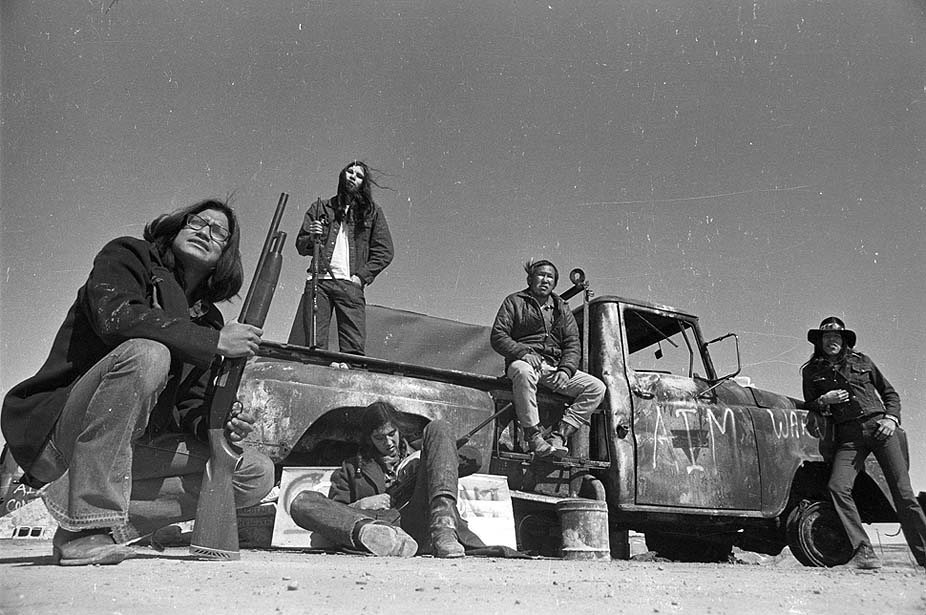
Participants in the Wounded Knee incident in 1973. Photo from Onkwehón:we Rising
Mark Tilsen, the president and co-founder of Native American Natural Foods, wonders why tribal history is mostly ignored in U.S. schools:
My three children are Oglala Lakota. They grew up here on the Pine Ridge Reservation. If they hadn't, maybe they wouldn't have known about the 1890 massacre at Wounded Knee. That's because Wounded Knee, the most famous catastrophe in Native history, is rarely taught in U.S. schools. Sometimes I wonder if Americans know more about what's happening in Hollywood than they do about what happened right here in South Dakota. Our little house was two miles from the spot where Chief Big Foot and his band of 300 followers were captured by the U.S. Army and herded into nearby Wounded Knee. It was late December 1890 and the temperature was below zero. Big Foot was supposed to be leading his people to safety, but he had TB and was coughing blood in the snow. He had to be transported by travois. That slowed the caravan that was fleeing the soldiers. They were refugees on their own land, and Wounded Knee would be their final stop. Eighty-three years later, in the winter of 1973, over 200 Lakotas and members of the American Indian Movement (AIM) seized the village of Wounded Knee to demand human and treaty rights. Hundreds of federal agents and U.S. soldiers surrounded the little village, armored personnel carriers patrolled the perimeter and fighter jets swooped overhead. For 71 days, our government carried out military operations against Indian people. The takeover electrified Indian Country and caught the attention of the world.Get the Story:
Mark Tilsen: 1890 and 1973: Do We Really Know What Happened at Wounded Knee? (The Huffington Post 11/7)
Join the Conversation